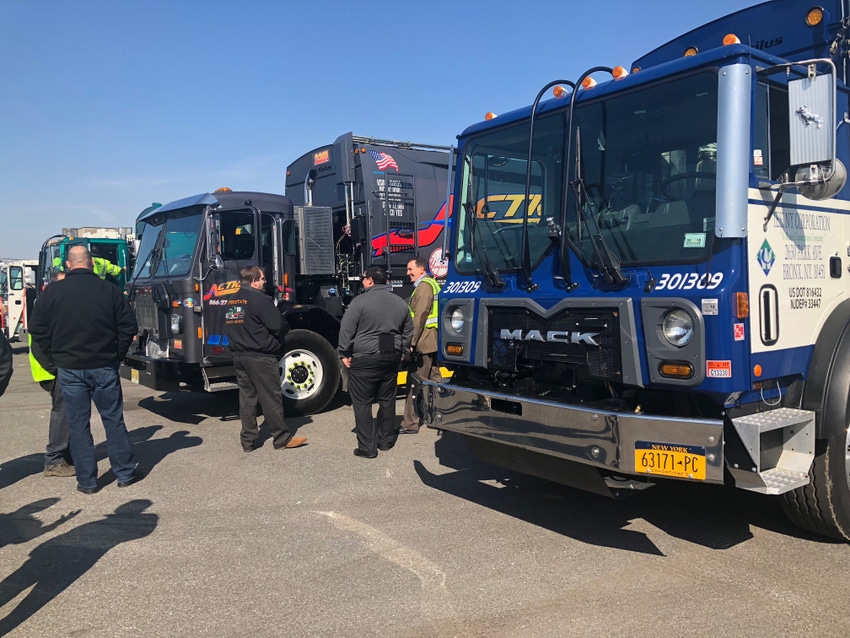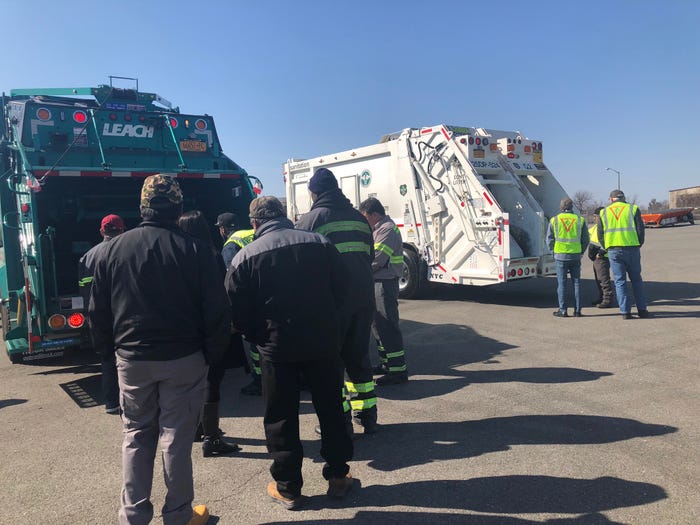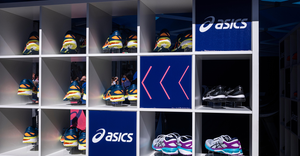The event took place yesterday at the DSNY Training Academy - Floyd Bennett Field in Brooklyn, N.Y.

The Fourth NYC Waste & Recycling Safety Symposium, which was hosted by the Solid Waste Association of North America (SWANA), the City of New York Business Integrity Commission (BIC), the National Waste & Recycling Association (NWRA) and the New Yorkers for Responsible Waste Management Inc., took place yesterday at the New York City Department of Sanitation Training Academy - Floyd Bennett Field in Brooklyn, N.Y. At the event, industry experts gave presentations on a number of safety products and showcased the many safety features outfitted on sanitation trucks during a hands-on demonstration.
“SWANA was very pleased to help organize and moderate today’s NYC Safety Symposium, which was the third of three safety events we held in the New York City area this week,” says SWANA CEO and Executive Director David Biderman. “Commissioner Brownell and his team at the BIC did a terrific job, and we look forward to working with them and the New York City Department of Sanitation on additional safety initiatives and events in the future.”
"It was obvious to me by the demonstrated improvements made in the safety management systems, employee engagement and the technology applied to the collection trucks at the Fourth NYC Safety Symposium that the coalition between BIC, DSNY and leadership from the private sector carting companies have a bedrock value toward improving the safety and wellbeing of the carting employees, the citizens and the environment in NYC, and they recognize that culture and safety performance lead overall organizational performance and their leadership is accountable to drive the safety culture change," says NWRA National Safety Directory Anthony Hargis.
“The Fourth NYC Waste & Recycling Symposium is yet another example of our industry’s ongoing commitment to safety,” says Kendall Christiansen, executive director of New Yorkers for Responsible Waste Management. “These events bring industry managers and labor leaders together to share best practices and innovative technologies that help all stakeholders make our industry as safe as it can be.”
Here are some highlights from the Fourth NYC Waste & Recycling Safety Symposium:
Daniel Brownell, commissioner and chair of the BIC, said that the government needs to work with the waste and recycling industry to mandate certain safety protocols and equipment that every truck should have, such as GPS.
For every 10 waste vehicles in a fleet, there will be two accidents annually, and one of every nine collisions will involve bodily injury to the other party, stated Ed Renna of Preco Electronics.
Renna provided a breakdown of the cost of backing accidents: $7,400 property damage only, $27,558 injury and $500,000 fatality.
He also shared that, 61 percent of municipal solid waste-related fatalities in 2016 were civilian fatalities.
Rob Donahue of Lytx highlighted the company’s 2017 stats, which revealed that Lytx captured 16,100,802 behaviors, 6,934,293 risky (scored) events, 120 collisions per day on average and 297 avoidable near collisions per day.
Three phases toward driver improvement:
Expose Risk – Capture data and evidence of poor driving behavior.
Identify and Prioritize – Use data to identify the riskiest drivers and develop and prioritize a coaching plan.
Coach and Improve – Coach and train the riskiest drivers, and reward the safe drivers for their performance.
The days of the week that have the highest concentration of risky behaviors: Thursday is the most common day for fundamentals and traffic violations, Tuesday is the most common day for risks related to driver condition and driver conduct and Friday is the most common day for risks related to awareness, distractions and outcomes.
The days of the year that have the highest concentration of risky behaviors: The riskiest single day is November 22, October 31 is the most common day with the highest frequency of collisions and near collisions and Thanksgiving, Veterans Day and Presidents’ Day are the top three riskiest major holidays.
Thirteen of the top 15 riskiest days in 2017 occurred during a narrow, six-week window between October 31 and December 14, according to Donahue.
Jeff Berwick of Dur-A-Guard and Haley Henderson and Robert Martineau of Airflow Deflector Inc. discussed the many benefits of side guards and how they can protect workers, pedestrians and bicyclists from falling under a moving truck and being run over.
Wil Selby of Ouster explained the different types of sensing technologies and their advantages and disadvantages.
Type | Advantages | Disadvantages |
Camera | High resolution, mature products, cheap | Patterns, no 3D, light dependence, etc. |
SONAR | Parking, cheap | Low range, low fidelity |
RADAR | Can see through objects, long range, cheap | Diffusion, low fidelity, bloom effects on metal objects |
LIDAR | High resolution, long range | Price (historically), size |
He also discussed FleetGuide, the autonomous-grade collision avoidance for today’s vehicles that’s enabled by Ouster LIDAR and features real-time collision warnings, 3D recordings of near collisions and collisions and networked fleet safety and learning.
Mark Regan of 3rd Eye detailed a scalable common platform for processing and distributing information to the right person at the right time. With the platform, companies can identify bad habits before they turn into disasters, recognize and foster best drivers and practices, protect themselves and their drivers with evidence, enhance the safety of their fleet and save, save up to 15 minutes per day with routing opportunities, end disputed and cash picks, identify high value potential customers, enhance the productivity of their fleet and save, shift their organization to predictive maintenance, understand their fleet real-time health diagnostics, enhance their team with a usage-based PM program and enhance the maintenance of their fleet and save.
Dave Caprio and Paul Birkenstock of Virgo Fleet Supplies spoke about the many benefits of LEDs, such as gaining 15 feet of additional stopping distance at a speed of 55 mph, and the return on investment. LEDs have a longer life than standard incandescent bulbs, and they are cheaper to replace when they do eventually burn out.
Peter Plate of Rosco Vision Systems closed out the presentations by talking about the Mobileye Shield+ System, a collision avoidance technology that increases awareness and safety for the driver and Vulnerable Road Users around the sanitation truck to prevent collisions.
The hands-on portion of the event allowed attendees to get up close and personal with a range of garbage trucks to learn more about their safety risks and features.

About the Author(s)
You May Also Like




